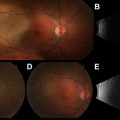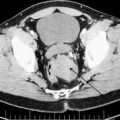Merkel cell carcinoma (MCC) is a rare but aggressive carcinoma of the skin, arising most commonly in sun-exposed sites of elderly patients. The diagnosis is based on characteristic histopathologic features. In 2008, the discovery of the Merkel cell polyomavirus led to intensified research into the viral pathogenesisis of MCC. MCC staging guidelines were established in 2010, and it demonstrated the importance of distinguishing clinical vs. pathologic evaluation of lymph nodes in MCC. Surgery and/or radiation is of the mainstay of therapy for early disease, while chemotherapy is reserved for more advanced disease. Treatments based on immunologic mechanisms are currently in development.
Key Points
- •
Merkel cell carcinoma (MCC) is a cutaneous malignancy with an aggressive course.
- •
MCCs has no specific distinctive features, although many present as an asymptomatic red or pink papule or nodule.
- •
The recent discovery of the Merkel cell polyomavirus (MCPyV) offers the potential for understanding the basis of the disease and creating targeted therapies.
- •
The first consensus staging system for MCC was developed in 2010 and emphasizes the importance of sentinel lymph node in staging of disease.
- •
Currently, there are no standardized guidelines for treatment, although surgery with possible adjuvant radiation is favored for local or locoregional disease. Chemotherapy is reserved for distant metastatic disease.
Introduction
MCC is a rare neuroendocrine carcinoma of the skin. MCC was originally described by Toker in 1972 in his report of 5 cases of trabecular cell carcinoma of the skin. Subsequently, through electron microscopy, these tumors were found to contain dense core granules. Because Merkel cells were known to be the only cells in the skin containing these granules, it was hypothesized that trabecular carcinoma of the skin originated from Merkel cells. The exact origin of Merkel cells is still a matter of debate, with some investigators hypothesizing that Merkel cells arise from stem cells of neural crest origin. Other investigators suggest that Merkel cells differentiate from epidermal keratinocyte-like cells (reviewed by Boulais and Misery ). Currently, the former is the favored viewpoint. Other names for MCC have previously been used, including neuroendocrine or primary small cell carcinoma of the skin and anaplastic cancer of the skin.
Although MCC is a rare malignancy, it has an aggressive clinical course. At the time of presentation, 66% of patients have local disease, 27% have nodal involvement, and 7% have distant metastases. The 5-year survival of MCC patients (relative to age-matched and gender-matched controls) is 64% for local, 39% for regional nodal, and 18% for distant metastatic disease. Given the rarity of this malignancy, there is a paucity of prospective trials, and management of MCC remains challenging in the absence of standardized guidelines for treatment. In 2010, the first consensus staging system for MCC was adopted by the American Joint Committee on Cancer (AJCC) ( Table 1 ). Unlike other previously proposed guidelines, a distinction was made between clinical versus pathologic examination of regional lymph nodes. The mainstay of treatment remains surgical, and there is support for the use of adjuvant radiation for localized and regional disease whereas chemotherapy is often reserved for palliative therapy in cases of distant metastases.







